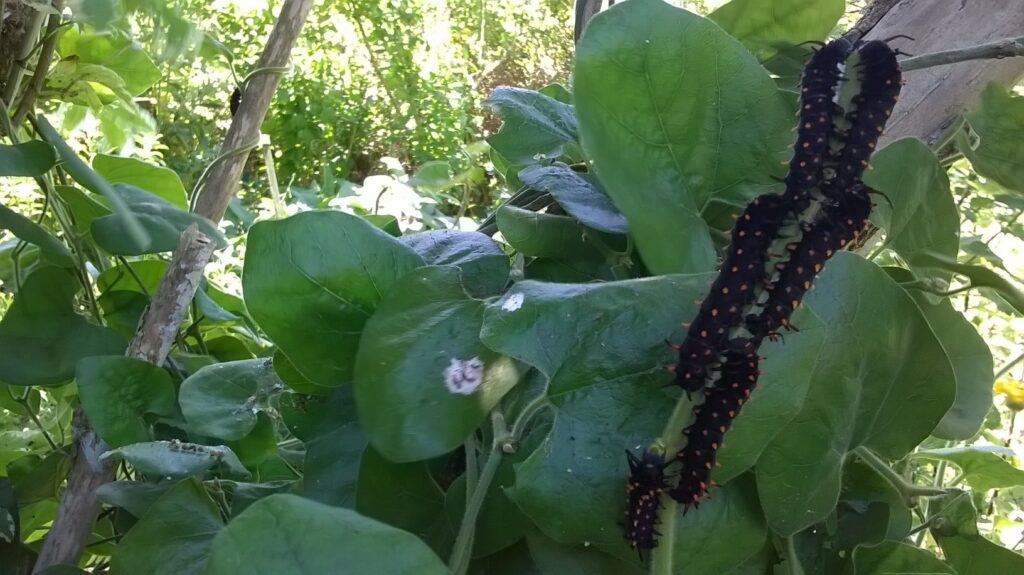The beautiful black Pipevine Swallowtails are emerging and looking for pipevine, their only caterpillar host plant. We’ve started a Dutchman’s pipevine (Aristolochia californica) at the Center near the entrance. Be patient —they can take a year or two to take off, climbing a trellis or tree or sprawling across the ground. Be sure to leave them some room to grow. Pipevine often grows in filtered sun near creeks and other wet areas. They like their roots in the shade but want to climb or move toward the sun. The funny pipe-shaped flowers appear first, then the bright green leaves. I planted two of these deciduous vines under an elderberry tree where they both climbed the tree and spread out on the ground. Grasses, too, serve as butterfly host plants: we have planted various species at our downtown Sebastopol gardens. Skippers (the tiny butterflies in shades of gold, orange and brown) use hairgrass (Deschampsia caespitosa), rye grass (Elymus spp.), Muhlenbergias, Nasellas, Boutelouas, Festucas and other bunchgrasses as caterpillar host plants.
Nancy Bauer, Habitat Corridor Project Co-Creator, Board President and
Author: The California Wildlife Habitat Garden: How to Attract Bees, Butterflies, Birds, and Other Animals (UC Press)
Want some Dutchman’s Pipe?
It’s a little tough to find but super doable! they will have it at the Fall plant sale for CNPS Milo Baker in October, contact your local chapter of the California Native Plant Society and California Flora is sure to have it for sale soon.
Stay tuned on their websites:
https://milobaker.cnps.org/
https://www.calfloranursery.com/
https://www.cnps.org/

